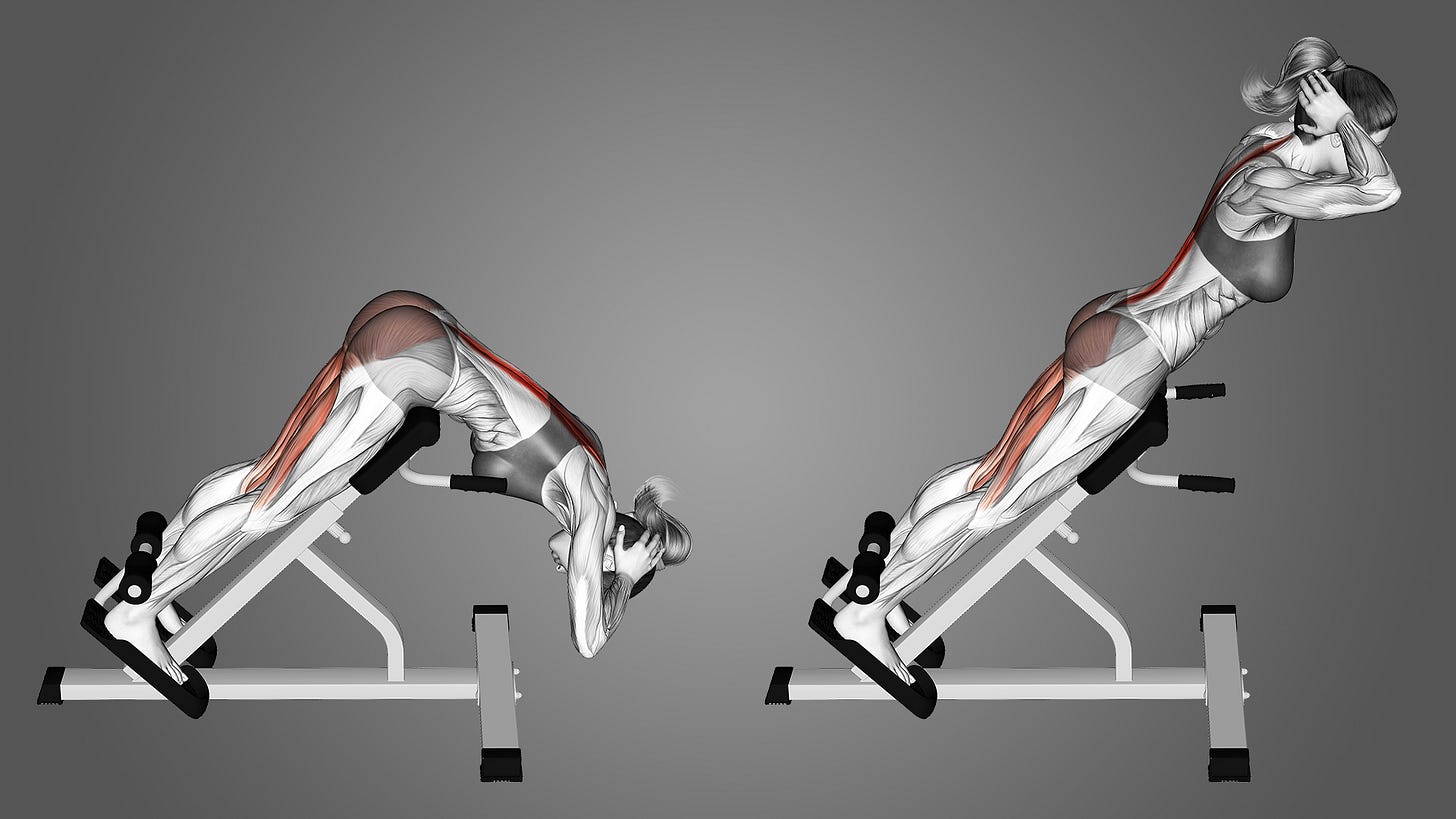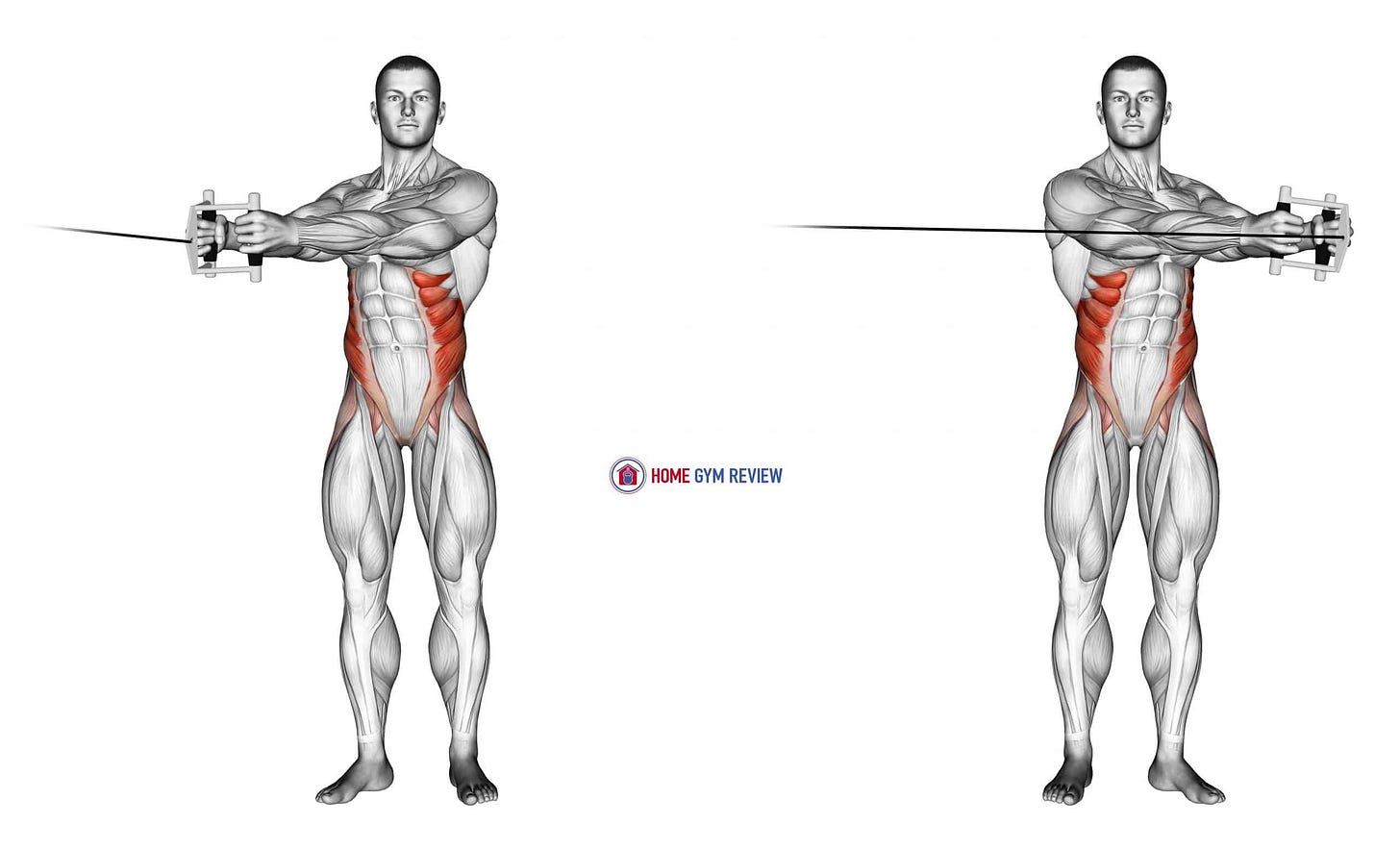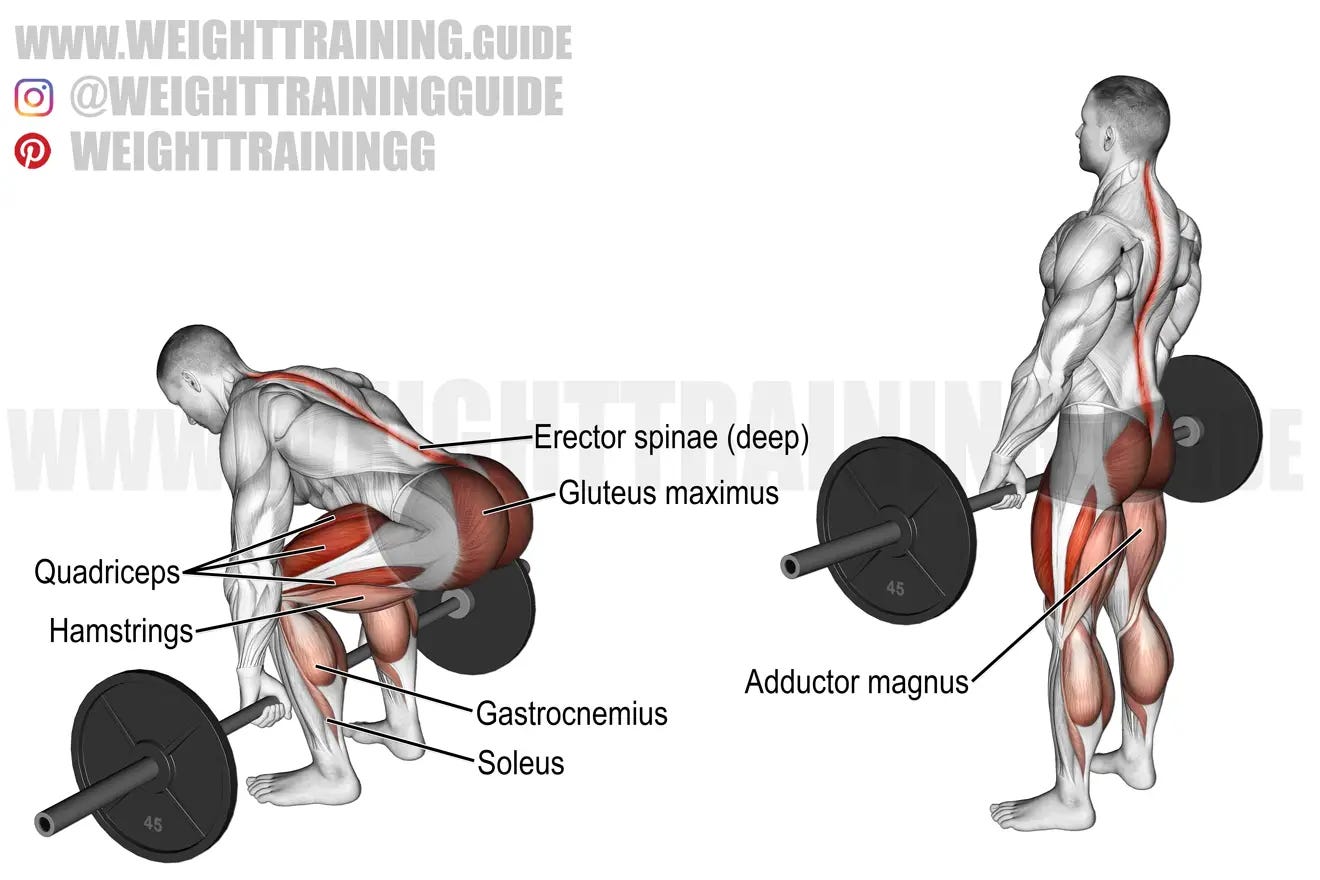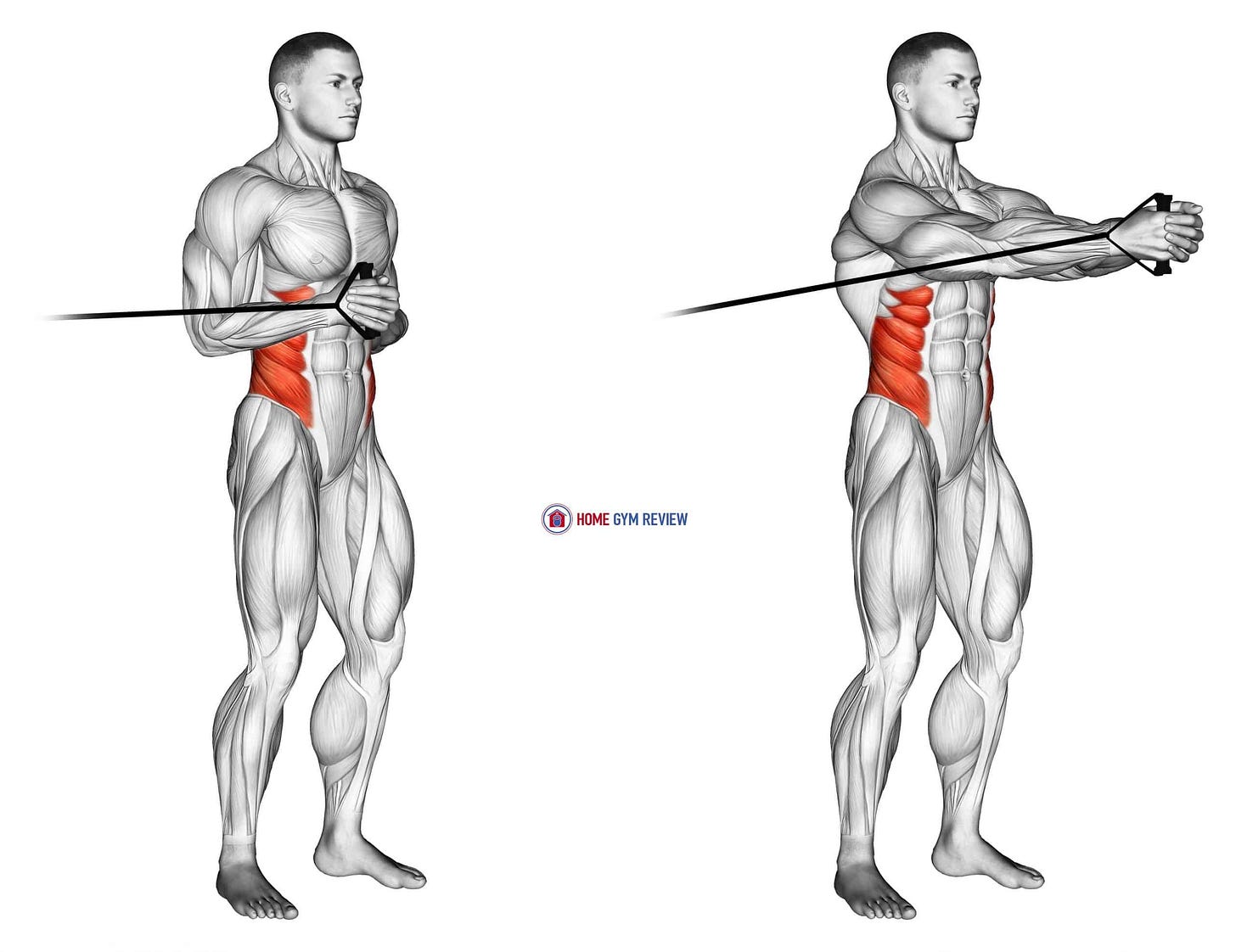Welcome to The Spotter!
I am Nolan Vannata. This newsletter is a part of my mission to make health, fitness, and nutrition content that is evidence-based, digestible, practical, and accessible.
What is your core?
If I asked 50 people to define the word “core”, I would probably get 50 different answers. Is it just your abs? Are your hips involved with your core as well? What about your back muscles?
My definition of “core” is the group of muscles that move your spine. This means that the muscles must be attached to your hips, ribs, and/or the spine itself.
Rather than list every muscle that I would consider to be a part of your core, let’s look at every movement the spine can do.
Flexion
Extension
Rotation
Lateral flexion
Your core is also responsible for the resistance of these movements.
Anti-flexion
Anti-extension
Anti-rotation
Anti-lateral flexion
Look how amazing and versatile your core is!!!
For the remainder of this article, I will explain why your core is important, what muscles are involved, and how to go about exercise selection.
But first, what training your core will NOT do
A strong core is praised in the health and fitness field and apparently will fix all of your problems. Joint pain? Core. Belly fat? Core. Poor squat form? You guessed it… CORE!
While I agree your core is very important, most of these claims are being caught in my bullsh*t filter.
Training your core may or may not fix your pain or posture. It depends on the source of your problems, the core exercises you choose, and how you perform those exercises.
Many people simply need better strength and function of their legs and arms. The answer isn’t always “core”.
Also, and I can’t emphasize this enough, training your core will not shrink your waist or burn the fat in that area just because that is where the muscles are located. Now would be a good time to block that fitness influencer who says otherwise.
The importance of a strong core
I never had a true appreciation for a strong and functional core until I was personal training in a physical therapy clinic. The ability to rotate and turn off a bedside light, rolling on the floor with your child or grandchild, lifting and carrying heavy grocery bags, or simply getting out of bed or off the couch are all movements that need adequate core strength to accomplish.
The quality of your core can influence the quality of your life.
There is also a large body of evidence that training the posterior chain is effective at treating chronic low back pain. Your posterior chain refers to the muscles of the whole backside of your body, meaning it also includes all of the core muscles in your low back.
The exercises in the studies that were used for this meta-analysis were mostly extension, lateral flexion, anti-flexion, and anti-lateral flexion exercises.
Some of the most common exercises were deadlifts, bridges, side planks, lateral steps, and supermans.
Muscles used during different core exercises
Here is what you need to know:
Flexion and anti-extension exercises train the core muscles in the front of your body. This is what you probably think of when you see or hear “abs”.
Extension and anti-flexion exercises load the core muscles of your back, primarily your lower back.
Lateral flexion and anti-lateral flexion train the core muscles on the sides of your body, usually favoring one side of your lower back and one side of your abdominal muscles.
Rotation and anti-rotation train similar muscle groups to lateral flexion and anti-lateral flexion but in slightly different ways.
There is more to it than that, but this should provide the general idea of what muscles get used during certain movements.
Example exercises
If you would like to learn more about these exercises, I recommend finding a demo video (or you can send me a message on Substack or Instagram). If you’re looking for more examples of exercises beyond what is listed here, you can search “anti-extension exercises”, for example or (like mentioned before) reach out to me.
Flexion
Crunches
Sit-ups
Extension
Back extension
Supermans
Rotation
Trunk twists
Lateral medicine ball throws
Lateral Flexion
Side crunch
Weighted lateral flexion
Anti-flexion
Bent over rows
Deadlifts
Glute bridge holds
Anti-extension
Planks
Rollouts
Anti-rotation
Palloff press
Renegade rows
Anti-lateral flexion
Single arm farmers carry
Side planks
There are hundreds if not thousands of core exercises out there. For a strong and functional core, try expanding your horizon beyond crunches and planks. You should twist, turn, bend, and carry. The demands of both everyday life and sport will require you to be strong in many different ways.
It would be difficult to cover all 8 movements within a single workout, but you should incorporate each of these into your workout routine throughout the week or month.










Ever since talking with you about it, Core has always been the closing part of my workouts. I feel like it’s helped other lifts to get a bit heavier, but like you said it didn’t cure me of everything… just helped in an overall balance sort of way!